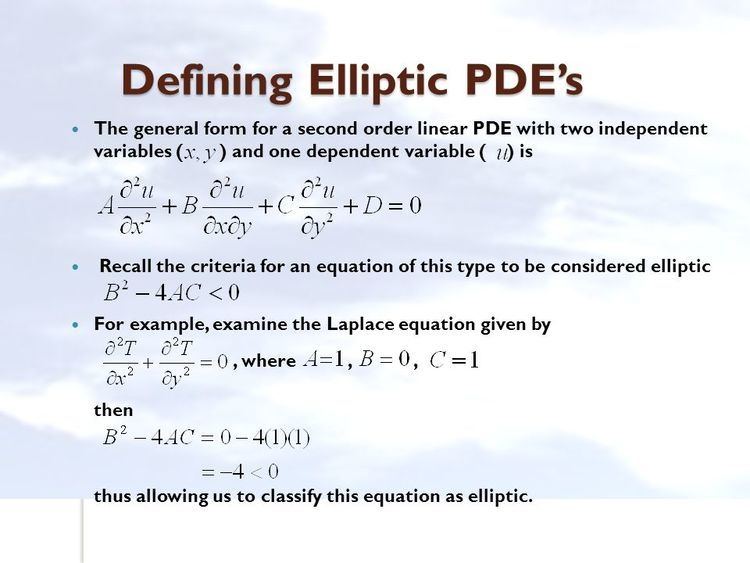 | ||
01 01 introduction linear elliptic partial differential equations part 1
Second order linear partial differential equations (PDEs) are classified as either elliptic, hyperbolic, or parabolic. Any second order linear PDE in two variables can be written in the form
Contents
- 01 01 introduction linear elliptic partial differential equations part 1
- Qualitative Behavior
- Derivation of Canonical Form
- In higher dimensions
- References
where A, B, C, D, E, F, and G are functions of x and y and where
with this naming convention inspired by the equation for a planar ellipse.
The simplest nontrivial examples of elliptic PDE's are the Laplace equation,
through a change of variables.
Qualitative Behavior
Elliptic equations have no real characteristic curves, curves along which it is not possible to eliminate at least one second derivative of
In parabolic and hyperbolic equations, characteristics describe lines along which information about the initial data travels. Since elliptic equations have no real characteristic curves, there is no meaningful sense of information propagation for elliptic equations. This makes elliptic equations better suited to describe static, rather than dynamic, processes.
Derivation of Canonical Form
We derive the canonical form for elliptic equations in two variables,
If
a second application gives
We can replace our PDE in x and y with an equivalent equation in
where
To transform our PDE into the desired canonical form, we seek
Adding
Since the discriminant
which are complex conjugates. Choosing either solution, we can solve for
into the canonical form
as desired.
In higher dimensions
A general second order partial differential equation in n variables takes the form
This equation is considered elliptic if there are no characteristic surfaces, i.e. surfaces along which it is not possible to eliminate at least one second derivative of u from the conditions of the Cauchy problem.
Unlike the two dimensional case, this equation cannot in general be reduced to a simple canonical form.
